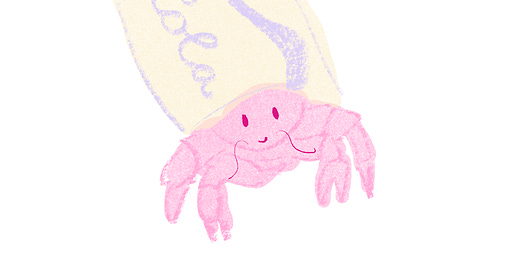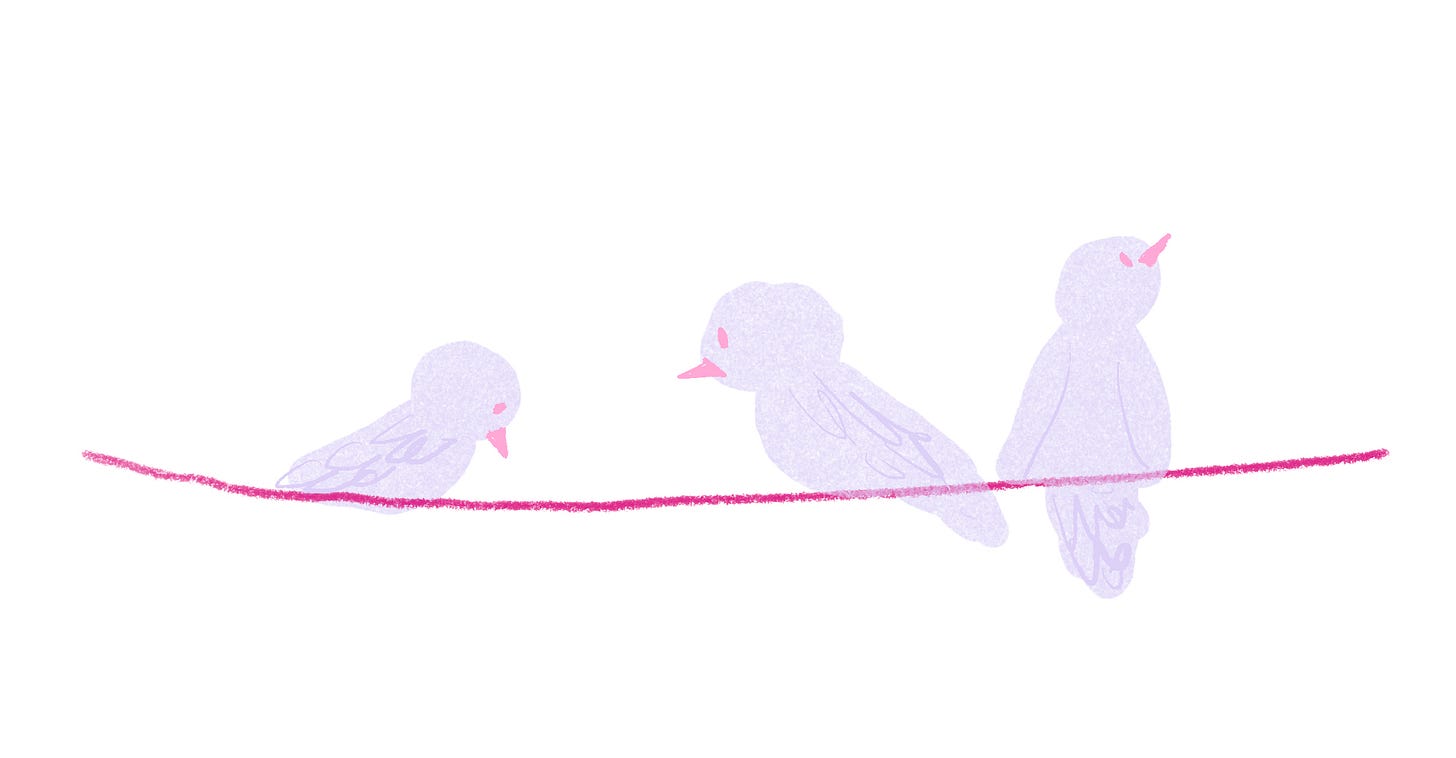How do hermit crabs stick to their new shells?
This, and other questions & answers for your curious inner child.
If you’re new to this newsletter, this is my just-for-fun segment each month that is essentially: “What I Googled This Month”. The intention is to bring some levity to your inbox and who knows- maybe you can parade some new fun facts at your next gathering.
You can read a brief blurb about my insatiable thirst for random facts here.
Please note: I am not an expert and this is truly just for fun. I don’t personally stand behind any of the sources. If you’d like to learn more or fact check, feel free to do some googling on your own as well and let me know what you find!
What I learned:
When a bird sits on a power line, there is no difference in electrical potential between the bird’s two feet and the wire (electricity flows from areas of high voltage to low voltage). Also, electricity will always move along the path of least resistance and flows best through conductors, and birds are not good conductors (their small spherical shape means they don’t have a big capacity to collect and store electrical charge) . The energy thus bypasses the birds and keeps flowing along the wire instead. (Source)
Note: This would be a different story if the bird was touching another wire with a different voltage, or touching something— like a pole— that was connected to the ground!
Why I googled: Okay I know technically you can probably eat most things but everyone I know cuts off the ends bits and I was moreso wondering what it would taste like or what nutritional benefits it might have.
What I learned: Yes!
Strawberry leaves actually have 6x more antioxidants than the berries themselves. They also have iron, magnesium, Vit A, and calcium as well as anti-inflammatory effects. (Source)
As for cucumbers… technically yes you can eat the end bits, but if it’s too bitter, it’s best to throw them away. This is because the bitterness is a sign of cucurbitacins which can cause digestive distress.
Why I googled: There is so much “health content” floating around from “experts” on the internet, and it feels like everyone is on the protein train these days. It’s all a bit confusing so I thought I’d just fact check this.
What I learned:
I remember learning in my 3rd year nutrition course that 0.8g-1.2g per KG (NOT lb!) of body weight was the “standard” and this has always been my north star/ guide.
As for an upper limit , it looks like 2g/ per KG is the recommendation. (Source). An excess of protein can strain certain organs (kidneys for example) in certain people with diagnosed or undiagnosed conditions. Additionally, any excess protein is just stored as fat in the body if it isn’t used.
Why I googled: I saw this adorable video about how hermit crabs switch shells with other hermit crabs and wondered how their new shells stay put.
What I learned: Turns out they’re all just hanging on!
A hermit crab's front half is covered with a hard exoskeleton, like that of most other crabs. Its long abdomen has a softer exoskeleton, which can adapt to fit into a spiraled snail shell. A hermit crab presses its abdomen, its fourth and fifth pairs of legs, and the appendages at the end of its abdomen (called uropods) against the shell's inner wall by contracting its longitudinal muscles. (Source)








